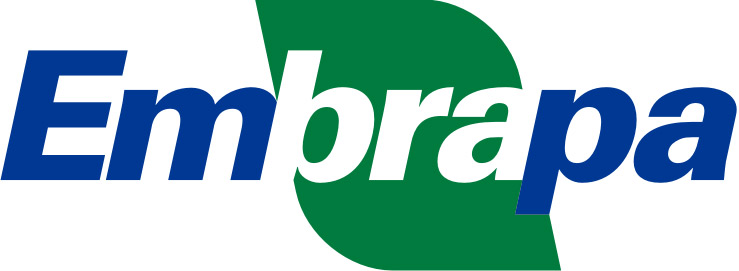Use este identificador para citar ou linkar para este item:
http://www.alice.cnptia.embrapa.br/alice/handle/doc/1099578Registro completo de metadados
| Campo DC | Valor | Idioma |
|---|---|---|
| dc.contributor.author | SOUZA, S. C. de | |
| dc.contributor.author | CAVALCANTI, J. J. V. | |
| dc.contributor.author | RAMOS, J. P. C. | |
| dc.contributor.author | ALVES, I. | |
| dc.contributor.author | SANTOS, R. C. dos | |
| dc.contributor.author | LIMA, L. M. de | |
| dc.date.accessioned | 2018-11-23T23:46:32Z | - |
| dc.date.available | 2018-11-23T23:46:32Z | - |
| dc.date.created | 2018-11-19 | |
| dc.date.issued | 2018 | |
| dc.identifier.citation | African Journal of Agricultural Research, v. 13, n. 11, p. 526-533, Mar. 2018. | |
| dc.identifier.issn | 1991-637X | |
| dc.identifier.uri | http://www.alice.cnptia.embrapa.br/alice/handle/doc/1099578 | - |
| dc.description | The Agave genus is composed of about 200 species, but the cultivation of sisal for fiber production in Brazil is restricted to two species: Agave sisalana and Agave fourcroydes, both have several accessions with wide variability. The collection of Agave of Embrapa has 37 accessions maintained in situ and periodically evaluated agronomical traits. Most of these accessions have phenotypic similarities, although they differ in fiber quality, which are widely used for commercial purposes. The identification of promising accesses contributes to the advance in improvement works, focusing on commercial indication. In order to estimate the genetic divergence of this collection, a cluster analyses was performed based on Inter-Simple Sequence Repeat (ISSR) markers and phenotypic traits. Genomic DNA from these accessions were used in polymerase chain reaction (PCR) with thirty ISSR oligonucleotides. For phenotypic characterization, twelve descriptors were adopted based on morphological and agronomic data. The Unweighted Pair Group Method with Arithmetic Mean (UPGMA) and Tocher multivariate methods were adopted. Thirteen groups were formed by the Tocher Method and six by UPGMA; however UPGMA method was more representative in the group formation. The comparison of the band patterns among accessions derived from the shoots showed that genetic variability is generated during asexual reproduction in these plants. The four lines generated from Tatui were the most divergent accessions. These plants are tallest, with higher mass values of fresh and dry mucilage, fresh and dry fiber mass, fiber length and presence of spines at the edges. The accessions from Instituto Agronômico de Campinas (IAC) showed the lowest genetic distances, indicating a possible narrow genetic base and high kinship degree. The crossings between H-RN, H-Kenya, H-400 fls, and H-11648 with Tatuí 1, 2, 3, and 4 can be a valorous strategy to broadening genetic diversity among commercial and native sisal germplasm. | |
| dc.language.iso | eng | eng |
| dc.rights | openAccess | eng |
| dc.title | Genetic divergence in Agave accessions through ISSR markers and phenotypic traits. | |
| dc.type | Artigo de periódico | |
| dc.date.updated | 2018-11-23T23:46:32Z | pt_BR |
| dc.subject.thesagro | Marcador Molecular | |
| dc.subject.thesagro | Agave Sisalana | |
| dc.subject.thesagro | Sisal | |
| dc.subject.thesagro | Melhoramento Genético Vegetal | |
| dc.subject.thesagro | Banco de Germoplasma | |
| dc.subject.thesagro | Fibra Vegetal | |
| dc.subject.nalthesaurus | Germplasm | |
| dc.description.notes | Article number: 4C7CCF056288 | |
| riaa.ainfo.id | 1099578 | |
| riaa.ainfo.lastupdate | 2018-11-19 | |
| dc.identifier.doi | 10.5897/AJAR2017.12913 | |
| dc.contributor.institution | SILMARA CHAVES DE SOUZA, UEPB - CAMPINA GRANDE, PB; JOSE JAIME VASCONCELOS CAVALCANTI, CNPA; JEAN PIERRE CORDEIRO RAMOS, UFPB - CAMPUS II , AREIA; ISAIAS ALVES, CNPA; ROSEANE CAVALCANTI DOS SANTOS, CNPA; LIZIANE MARIA DE LIMA, CNPA. | |
| Aparece nas coleções: | Artigo em periódico indexado (CNPA)  | |
Arquivos associados a este item:
| Arquivo | Descrição | Tamanho | Formato | |
|---|---|---|---|---|
| 2.GeneticdivergenceinAgave.pdf | 546.16 kB | Adobe PDF |  Visualizar/Abrir |









